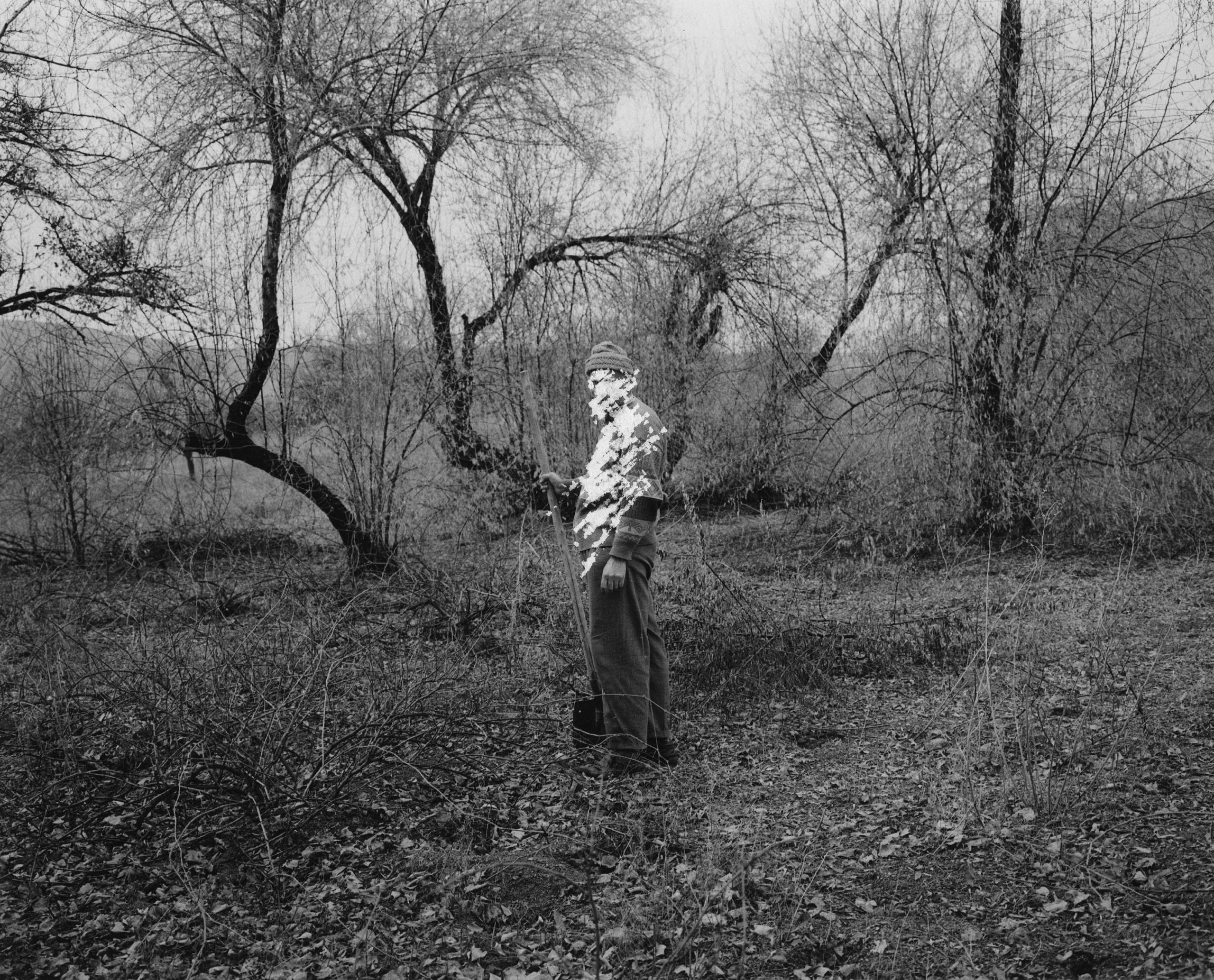“What is interesting about the way he works is that it is in part an investigation, but completely at the mercy of his own personal interaction with what unfolds,” says George Georgiou, who was one of the Turkish photographer’s teachers on a year-long workshop run by the International Summer School of Photography, along with his partner Vanessa Winship. “There is an element of accident in his photography that he totally embraces.”
In his work, Gökçeer will intuitively switch materials and techniques to allow, as Georgiou puts it, “interference to surface on the image”. This accidental element is evident in Tangle, in which a fictional investigation into a murder develops as a stream of consciousness in a series of images that take us into the psychological Badlands of Central Anatolia.
The story unfolds from a murder mystery that begins when a woman goes missing. After three days, her body is found in a pit of snow, her death said to be the result of a love affair with a genie. But Gökçeer worked out that the ‘spiritual genie’ was a ruse to keep secret what had really happened – a secret that would shame the community, and possibly result in the punishment of the woman’s actual murderers.
As it says in an introduction to Tangle: “It seemed as if everyone knew of the crime, but to maintain the community’s dignity it was wrapped in mystique to obscure what needed to stay concealed in the dark.” Gökçeer had planned to explore the culture and geography of Central Anatolia, but upon hearing this murder story he soon found himself tangled in a web of intrigue.
And intrigue is precisely what he photographs in Tangle. The project starts with a simple landscape; we see what appears to be a dried-up lake, its bed cracked; only a few patches of dampness remain. Gökçeer moves from landscape into villages – isolated dwellings covered in a blanket of snow, places where dark things happen, where everyone knows the secrets that must remain forever hidden.
Black-and-white goes to colour, prints are ripped and scratched. As Gökçeer continues his investigations, people appear out of cars, with their backs turned. We see what looks like a mortuary slab. Male prowess looms large in the series – in the cafes, on the street. A man raises his middle finger at Gökçeer, another is on a prayer mat, praying to Allah, perhaps for guidance or forgiveness.
Tangle is more about a mood than an explanation – an examination of what lies beneath the genie stories. “His work attempts to recreate and respond to his experience,” says Winship. “Sometimes he turns the camera on himself, sometimes he approaches themes and subjects that are apparently intangible, often complex, and difficult to grapple with photographically.”
Find more of Cemil’s work here.
First published in the January 2014 issue. You can buy the issue here.

